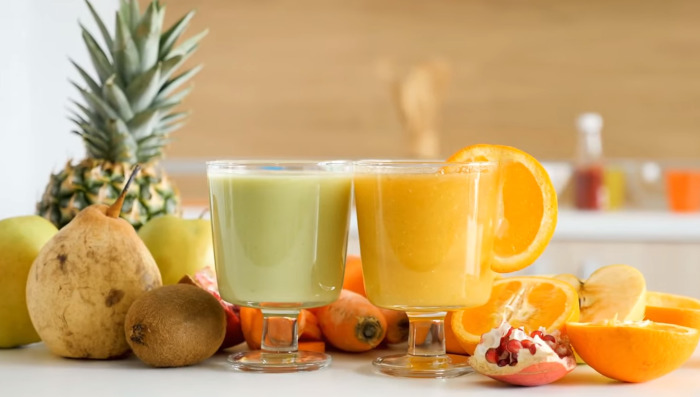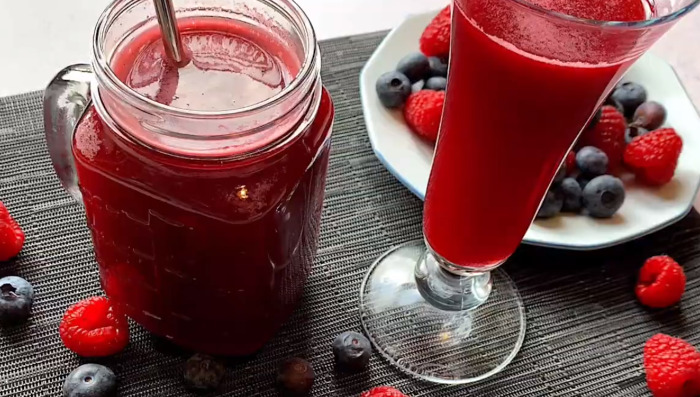What is Cholesterol?
Cholesterol, often discussed in the context of heart health, is a crucial substance found in all cells of the body. While it serves essential functions like aiding digestion and assisting in hormone and vitamin D production, the balance of cholesterol is pivotal.
The bloodstream carries cholesterol via lipoproteins, primarily low-density lipoprotein (LDL) and high-density lipoprotein (HDL). LDL is often labeled as the “bad cholesterol” as it can lead to cholesterol buildup in arteries, potentially causing heart-related issues. On the other hand, HDL, known as the “good” cholesterol, transports cholesterol back to the liver for removal.
High cholesterol, a common concern, often results from poor dietary choices, obesity, lack of exercise, smoking, diabetes, or genetic factors. Excess consumption of saturated fats from certain foods can lead to an overload of LDL cholesterol, increasing the risk of heart disease.
To maintain healthy cholesterol levels, one should focus on adopting a balanced diet, incorporating healthy fats, and being mindful of food choices. Additionally, engaging in regular physical activity and avoiding smoking play significant roles in heart health.
3 best juice recipes for high cholesterol!
1.Apple juice:
Ingredients:
Certainly, here are the ingredients for making apple juice:
- Fresh apples: You’ll need a selection of ripe apples. The number of apples depends on how much juice you want to make, but for a standard glass of juice, 3-4 apples are usually sufficient.
- Water: A small amount of water may be added to thin the juice and achieve the desired consistency.
- Lemon juice (optional): Adding a splash of lemon juice can enhance the flavor and freshness of your apple juice. It’s optional but recommended for a zesty twist.
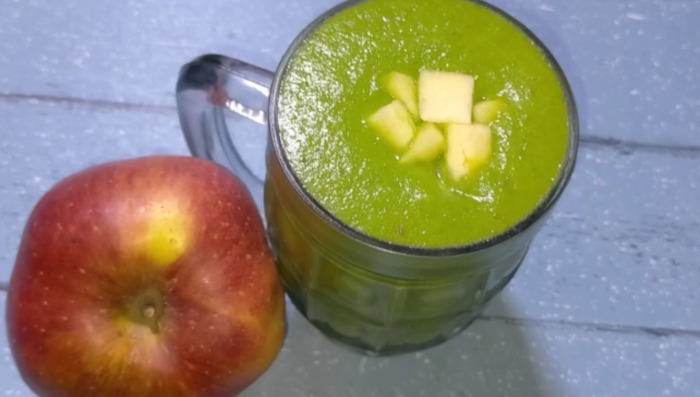
Instructions:
Here are the instructions for making fresh apple juice:
- Prepare the Apples: Start by washing the apples thoroughly to remove any dirt or residues. You can choose to peel them or leave the skin on, depending on your preference. Make sure to remove any stems and seeds.
- Chop the Apples: Cut the apples into smaller pieces to make it easier for the blender or juicer to process them.
- Blend the Apples: Place the chopped apples into a high-speed blender or juicer. If you’re using a blender, you may need to add a small amount of water to help with the blending process. Blend until you achieve a smooth consistency.
- Strain (Optional): If you prefer a pulp-free apple juice, strain the blended mixture through a fine mesh strainer or cheesecloth. This step is optional and depends on your taste.
- Add Lemon Juice (Optional): For a zesty flavor, you can add a splash of fresh lemon juice to your apple juice. This step is also optional.
- Serve and Enjoy: Pour your homemade apple juice into a glass, add ice if desired, and enjoy your refreshing and nutritious drink.
2.Carrot juice:
Ingredients
Here are the ingredients you’ll need to make fresh carrot juice:
- Carrots: You’ll need fresh carrots as the main ingredient. The number of carrots depends on how much juice you want to make, but a standard serving often requires about 4 to 5 medium-sized carrots.
- Water: You may need a small amount of water to help with the blending or juicing process, especially if your carrots are on the drier side.
- Optional Additions: While not essential, you can enhance the flavor and nutrition of your carrot juice by adding other ingredients such as a small piece of fresh ginger for a spicy kick or a squeeze of fresh lemon or orange juice for a citrusy twist. These additions are entirely optional and can be adjusted to your taste.
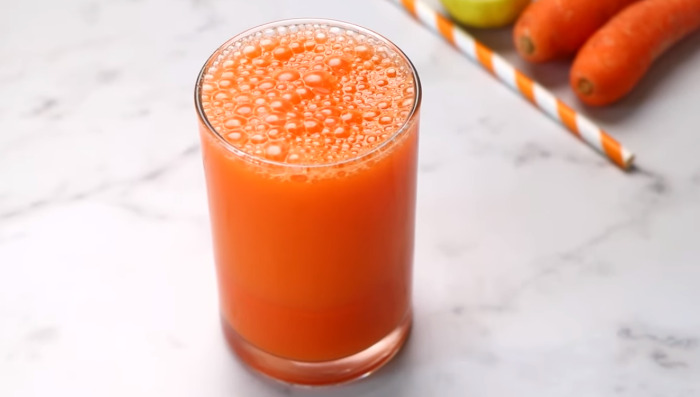
Instructions:
Here are the simple instructions to prepare fresh and nutritious carrot juice:
- Wash and Peel: Start by thoroughly washing the carrots under running water to remove any dirt or impurities. You can peel them if you prefer, but it’s not necessary, especially if the carrots are organic and well-cleaned.
- Chop the Carrots: Cut the washed and peeled carrots into smaller chunks. This will make it easier for your juicer or blender to process them.
- Blend or Juice: You have two options for extracting the juice:
- Using a Juicer: If you have a juicer, simply feed the carrot chunks into the juicer chute. The juicer will separate the juice from the pulp, and you’ll be left with fresh carrot juice.
- Using a Blender: If you don’t have a juicer, you can use a blender. Place the carrot chunks in the blender along with a small amount of water (if needed). Blend until smooth. Then, strain the blended mixture through a fine-mesh strainer or nut milk bag to separate the juice from the pulp.
- Serve: Pour the fresh carrot juice into a glass. You can serve it as is or over ice. Optionally, you can add a squeeze of fresh lemon or orange juice for extra flavor.
- Enjoy: Your homemade carrot juice is ready to enjoy. It’s best to consume it immediately to get the most nutritional benefits.
3.Citrus juice:
Ingredients:
Following are the ingredients you’ll need to make delicious citrus juice:
- Citrus Fruits: Select your preferred citrus fruits. Common options include oranges, grapefruits, lemons, and limes. You can use a single type or mix them for a unique flavor.
- Fresh Water: To dilute the juice and adjust the concentration to your taste, you may need fresh water. This is optional and depends on how strong you want the citrus flavor to be.
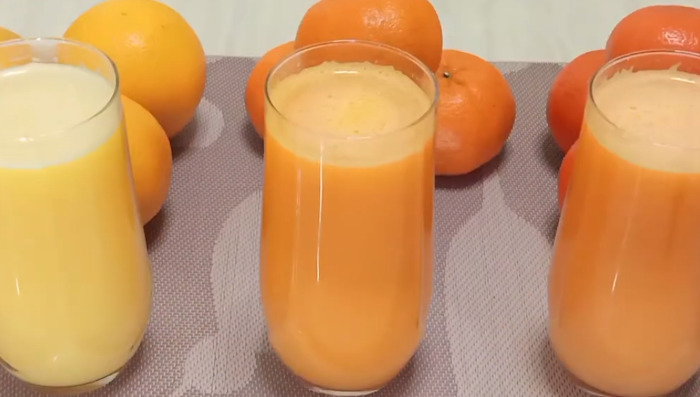
Instructions:
Absolutely! Here are the straightforward steps to prepare delicious citrus juice:
- Gather Your Ingredients: First, collect your fresh citrus fruits and a source of freshwater. This could be a jug or a glass of water.
- Wash the Citrus Fruits: Rinse the citrus fruits thoroughly under cold running water. This ensures they are clean and ready for juicing.
- Cut the Citrus Fruits: Slice the citrus fruits in half. If you have a juicer, cut them to fit the juicer’s feed chute. If you plan to juice by hand, cutting them in half will make it easier to extract the juice.
- Juice the Citrus Fruits: Use a juicer or a handheld citrus reamer to extract the juice from the fruits. Squeeze or press firmly to get the maximum juice out of each fruit.
- Adjust the Concentration: If you find the juice too strong, you can dilute it by adding fresh water. Start with a small amount and adjust to your taste.
- Serve and Enjoy: Pour the citrus juice into a glass, add ice if desired, and serve immediately.
Can Juicing Help You Lower Your Cholesterol?
Juicing has gained popularity as a health-conscious practice, and it may indeed play a role in lowering cholesterol levels. The key lies in the choice of ingredients. Fruits and vegetables rich in fiber, antioxidants, and specific nutrients can have a positive impact on cholesterol. For example, citrus fruits like oranges and grapefruits contain soluble fiber and antioxidants that can help reduce LDL or “bad” cholesterol levels. Additionally, vegetables like kale and spinach are packed with nutrients that support heart health. By incorporating these ingredients into your juicing routine, you can potentially contribute to a heart-healthy lifestyle. However, it’s essential to remember that juicing should complement a balanced diet and not be seen as a sole solution for managing cholesterol. Combined with other healthy habits, juicing can be a valuable addition to your overall wellness journey.
Why is Having High Cholesterol Bad?
High cholesterol poses a significant risk to our well-being because it can lead to the development of serious heart and cardiovascular issues. Cholesterol, a waxy substance present in our cells and certain foods, is transported through our bloodstream by lipoproteins. There are two main types: LDL (low-density lipoprotein) and HDL (high-density lipoprotein). High levels of LDL, often referred to as “bad” cholesterol, can cause cholesterol buildup in our arteries, leading to blockages and impaired blood flow. This, in turn, increases the likelihood of heart attacks and strokes. On the other hand, HDL, known as “good” cholesterol, helps remove excess cholesterol from the body. When we have an imbalance, with too much LDL and too little HDL, our cardiovascular system’s functionality is compromised. Therefore, it’s essential to manage cholesterol levels through diet and lifestyle to reduce the risk of heart disease and its potentially life-threatening consequences.
Conclusion:
In conclusion, understanding cholesterol and its impact on our health is vital. Cholesterol is a naturally occurring substance necessary for various bodily functions. However, an excess of “bad” LDL cholesterol can lead to arterial blockages and increase the risk of heart disease and stroke. Conversely, “good” HDL cholesterol helps remove excess cholesterol from the body, mitigating these risks.
To maintain optimal health, it’s crucial to adopt a heart-healthy lifestyle. This includes making mindful dietary choices, incorporating nutrient-rich foods like fruits and vegetables, and reducing saturated fat intake. Regular physical activity and avoiding smoking are also key factors in cholesterol management.
Additionally, juicing can be a valuable tool in lowering cholesterol levels naturally. Fruits and vegetables like broccoli, apples, grapes, and strawberries, when juiced, provide a concentrated source of heart-healthy nutrients and antioxidants.By embracing these practices and making informed choices, you can take proactive steps toward lowering cholesterol, reducing the risk of heart disease, and enhancing overall well-being.
FAQs:
Does drinking apple cider vinegar help lower cholesterol?
Apple cider vinegar (ACV) has gained popularity for its potential health benefits, including its impact on cholesterol levels. While some studies suggest that ACV may modestly reduce LDL (bad) cholesterol and improve heart health, the evidence is not yet conclusive.ACV is rich in acetic acid, which may help lower cholesterol by preventing its absorption in the digestive tract.
However, it’s essential to consume ACV in moderation and as part of a balanced diet. There’s no one-size-fits-all answer, and individual responses may vary.To potentially benefit from ACV, consider adding a small amount to your diet, such as in salad dressings or diluted with water. Monitor your cholesterol levels and consult with a healthcare professional for personalized advice.
What morning juice is good for high cholesterol?
When it comes to choosing a morning juice to help manage high cholesterol, there are several options to consider. Citrus juices like orange or grapefruit juice can be beneficial due to their high vitamin C and fiber content, which may support heart health and help lower cholesterol levels.Additionally, pomegranate juice is rich in antioxidants and has been associated with reducing LDL (bad) cholesterol.
Another excellent choice is green tea, which can be consumed as a juice or steeped as a beverage. Green tea contains compounds called catechins, known for their potential cholesterol-lowering effects.Remember that while these juices may offer some benefits, they should be part of a well-rounded diet and lifestyle that includes a variety of heart-healthy foods and regular physical activity. Always consult with a healthcare professional for personalized advice on managing high cholesterol.

